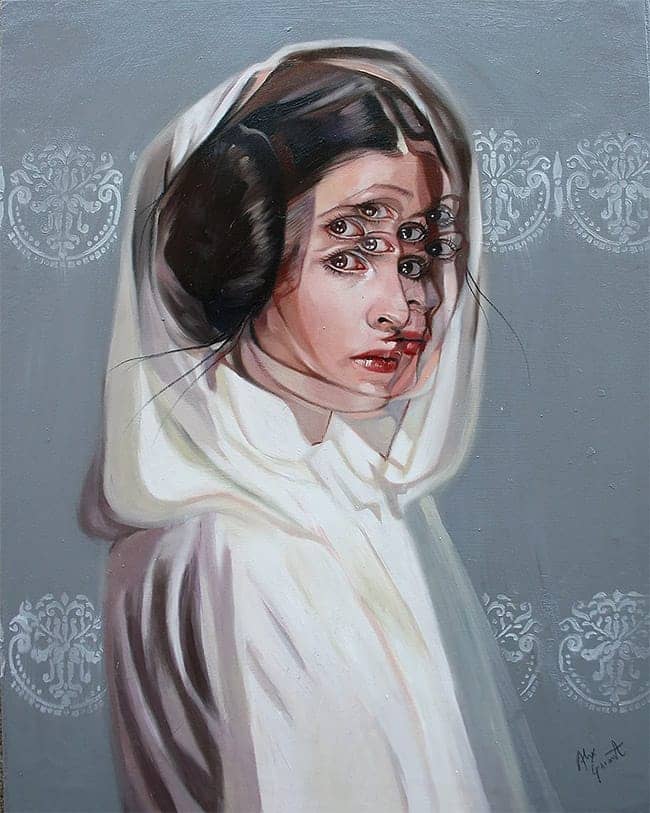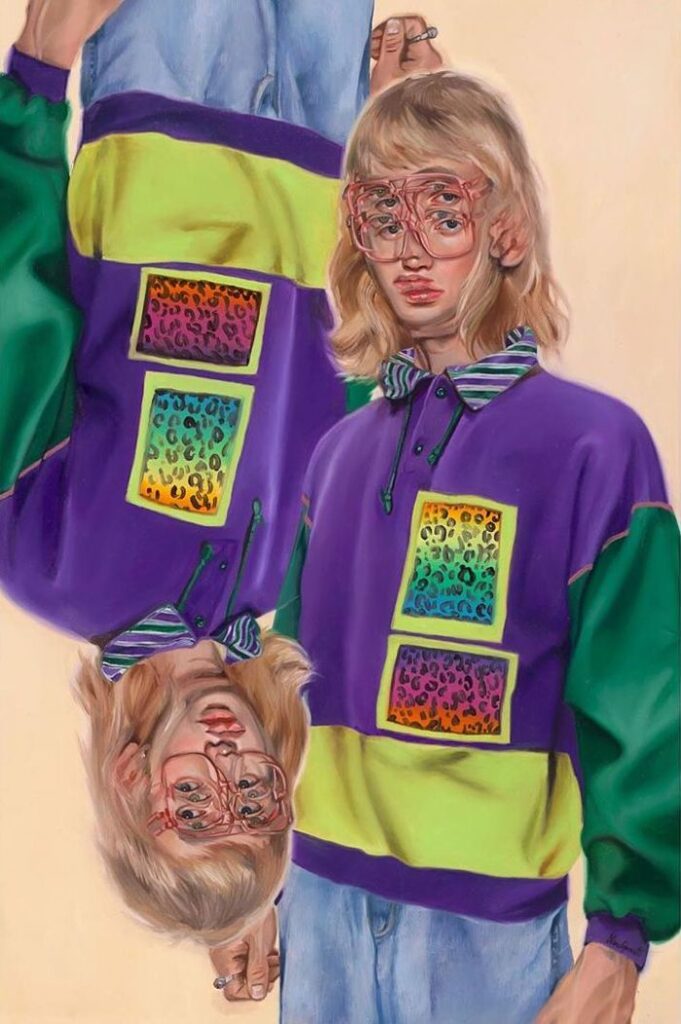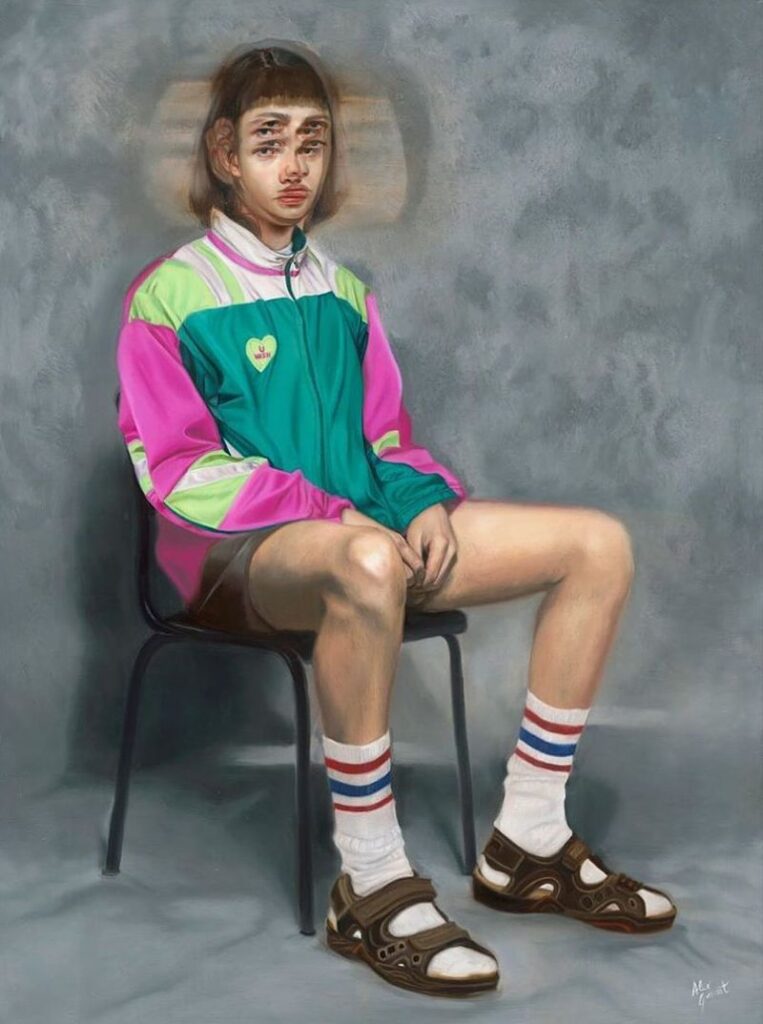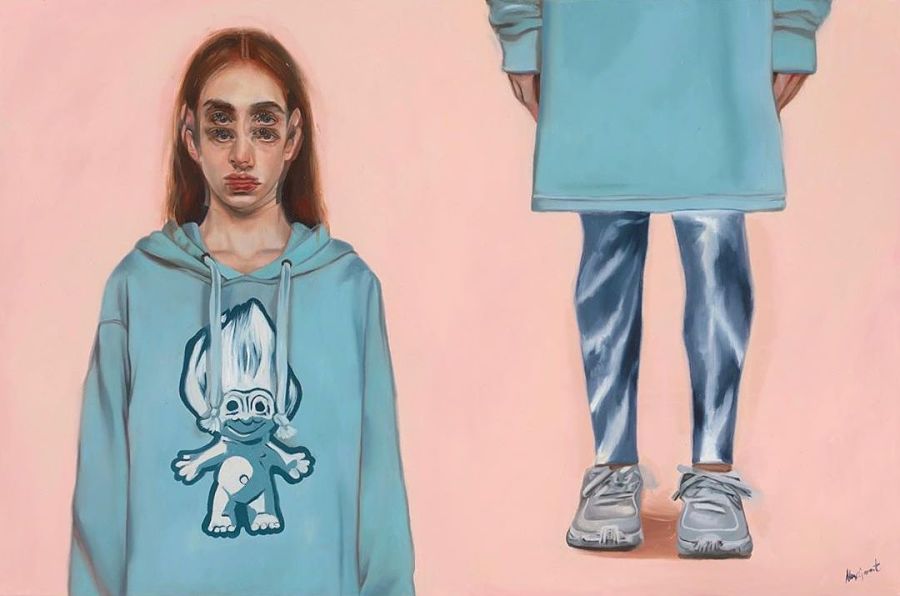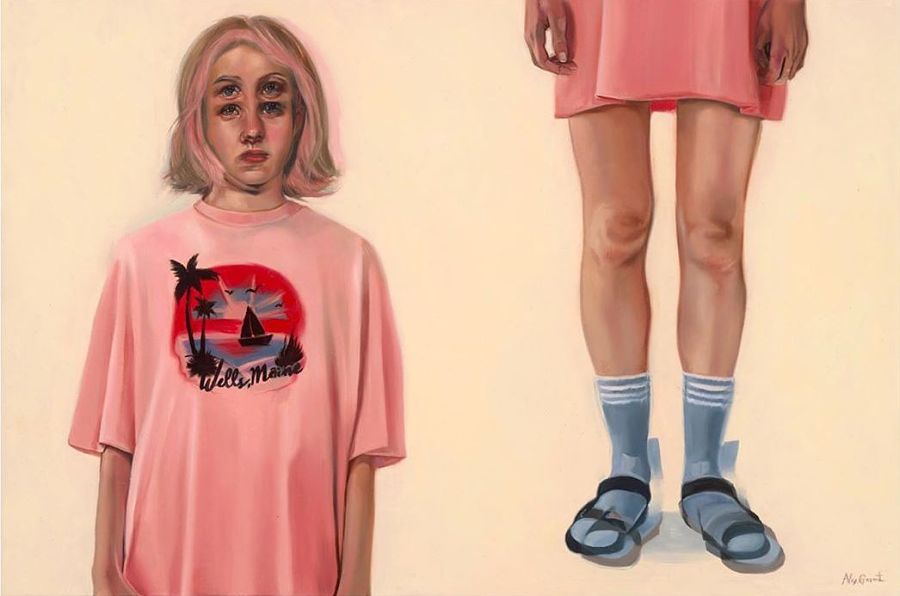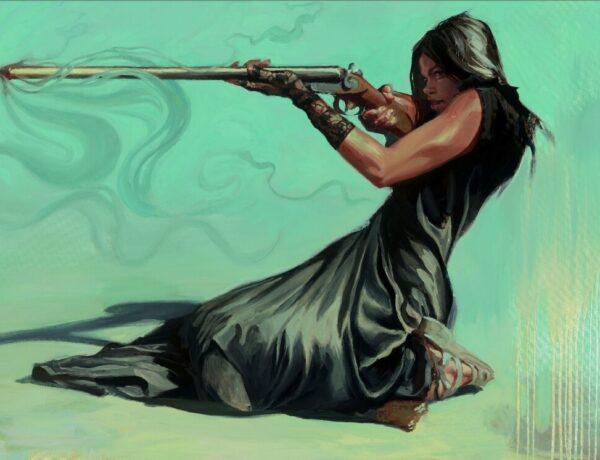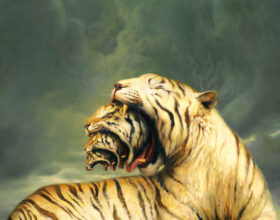You might have had a kaleidoscope as a kid. I sure remember mine. The thing looked pretty dull from the outside, but looking through it changed the world into a fragmented, dizzying place – seeing my familiar world transform into a whole different one. That same kaleidoscopic feeling bubbles up when I look at the works of Canadian artist Alex Garant. Alex’s work is very versatile… exploring colors, patterns and light yet sticking to her characteristic style. In this interview, we talk about the moment that redefined Alex Garant’s life, her inspiration, working process and dreams for the future.
Interview conducted in conjunction with Alex Garant’s editorial in Issue 20 of Beautiful Bizarre Magazine.
Humans instinctively attempt to connect with others by looking at them in the eyes. That’s how we understand emotions, how we relate, how we empathize. By forcing the viewer to search for that connection when looking at my works, I hope to create an additional involvement in the piece.
Hi Alex, nice to meet you! Could you give a short introduction to the readers that haven’t met you or your work yet?
Hello! Lovely to e-meet you! Absolutely, my name is Alex Garant and I am a visual artist from Canada. I was originally born in Quebec City but I currently reside in Toronto. I work primarily in oil and I am mostly known for my dizzying portraits.
What’s your background?
I grew up in Quebec City and was always involved in art on some level. My mother introduced me to drawing and painting at a very young age. I attended my first oil painting class when I was 7 years old, and later on in life, attended Art School in St-Augustin (just outside Quebec City).


If you had to choose one piece of art to describe your work to someone – which piece would you choose and why?
That’s an interesting question because I am extremely hard on myself and always think previous works never fully render the exact vision I originally had in mind. So currently, I would say “Wearing Your Dreams”, “Myself Regretfully” and “Revelations”; those pieces were the closest renditions of my visual intentions. My goals are always to create an experience for the viewer, a balance between looking at something aesthetically pleasing and an overwhelming sense of confusion and vibration all at once. To me, those pieces the closest to be technically successful. I often find myself in a never-ending quest to be able to materialize visual concepts stuck in my cluttered head.

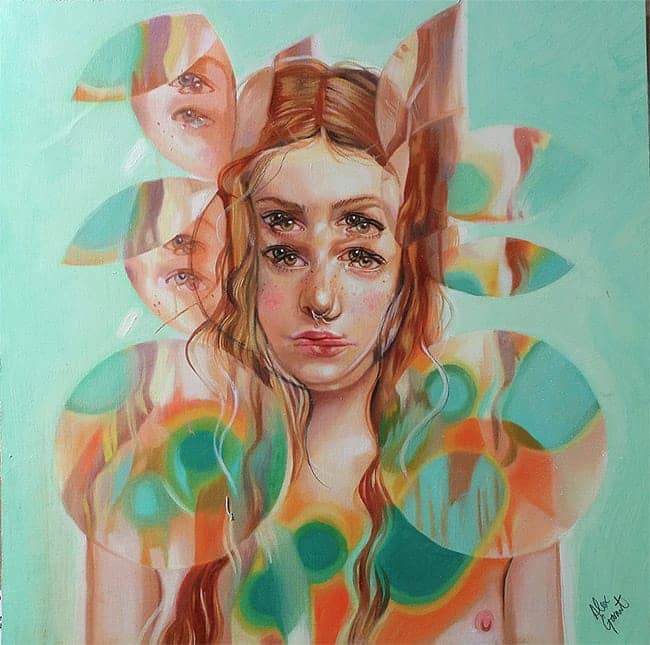
You suffered from a heart attack in 2012. You described that moment as a ‘wake-up call’ and decided to pursue a career in art after the event happened. Can you tell a bit more about this moment and how it changed your life?
Well, it is still a bit hard for me to talk about it. For the first couple of years after the event, I suffered from PTSD. On top of the physical anxiety, it also manifested as this rush to make things happen for myself. I could no longer let life just take me anywhere without me having a say in it. I needed to take control of my life, I needed to utilize the time I had left on this earth to make something happen. I was concerned I had wasted too many years on irrelevant matters and not put enough efforts into my true passion: Art. I just knew that with this second chance I had to live fully, I had to build my legacy around art. So the day when I truly die, I will then be happy with what I leave behind. It does sound a bit intense but this is what drives me every day: make it count, and put your efforts into something you love. Everything else is irrelevant. Getting older is a privilege not everyone has a chance to experience; it would be a shame to waste our time.
You are known as the ‘Queen of Double Eyes’. The eyes, ‘the windows of the soul’, are often the toughest part in a painting – do it wrong and the whole portrait fails! You however take the challenge and succeed in painting not just one but several sets of eyes on each painting. What is it that fascinates you about eyes?
Once again, it is all about building the experience for the viewer. Humans instinctively attempt to connect with others by looking at them in the eyes. That’s how we understand emotions, how we relate, how we empathize. By forcing the viewer to search for that connection when looking at my works, I hope to create an additional involvement in the piece. The encounter can be fascinating, disturbing, uneasy, lovely or even completely unpleasant, it is okay. As long as I am able to get a reaction out of people from my art, I feel like I somehow succeeded.
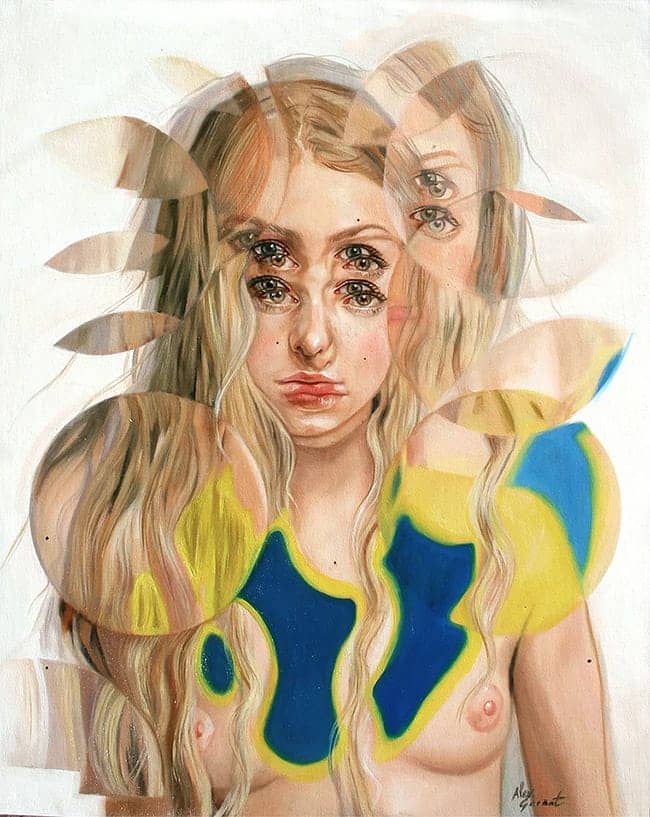
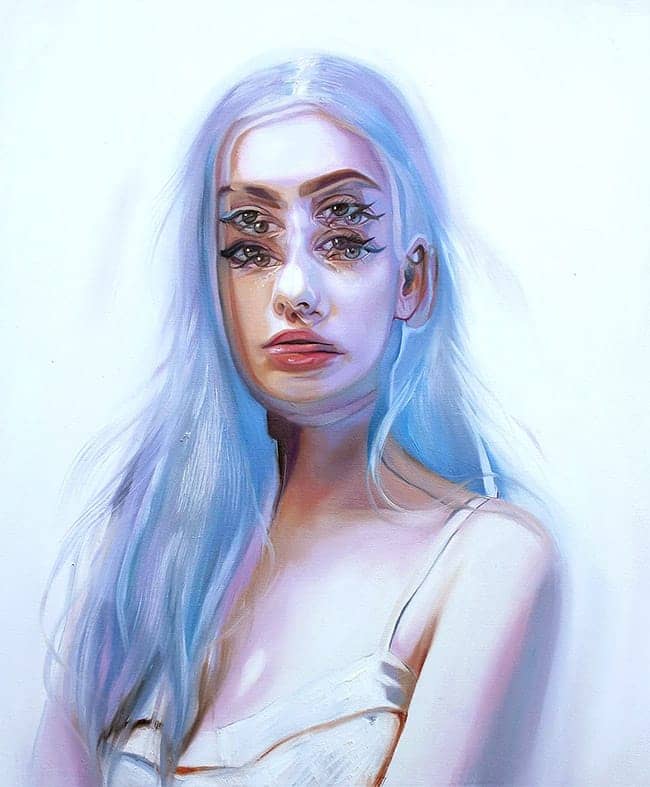
The double eyes have become your trademark, can you remember the first time you doubled the eyes in a painting?
It has been a long time, even in my works from college; I could see some duplication of elements and mirroring of images. It just took me longer to commit to the idea and truly embrace it as my visual brand. The more you create the more patterns an artist is able to spot within their own collection of works. Eventually those patterns or returning elements become part of who you are, and you start genuinely and naturally using them in all paintings.
You work mainly with oil. Can you share a bit about your creational process?
Sure, I work with selected models for reference poses. I have worked with local models who come to my studio where I can take several reference pictures and sometimes with models located elsewhere they send me reference photos via email. Even phone photos work most of the time. I get inspired by specific features and have the tendency to return to a few chosen muses. From reference photos, I will draw sketches; I limit myself when it comes to what I paint, so I give myself a lot more creative freedom with colors and textures.
When I am happy with the idea, I transfer it on canvas, usually with the help of a projector. For the concept to work, I need to ensure all proportions are kept intact and symmetry is also important. I use a pencil to draw on the canvas. I sometimes will redraw the whole thing with a brush and diluted paint if the pencil drawing is not perfect. Then the fun commences. I start painting, I like to paint wet on wet as much as possible, if I can finish a painting within 48 hours, I have to work in sections so each part can be done wet-on-wet separately. I will do some glazing touch ups after the whole piece has been completed as needed. But glazing has never been my forte, so I keep it to a minimum.
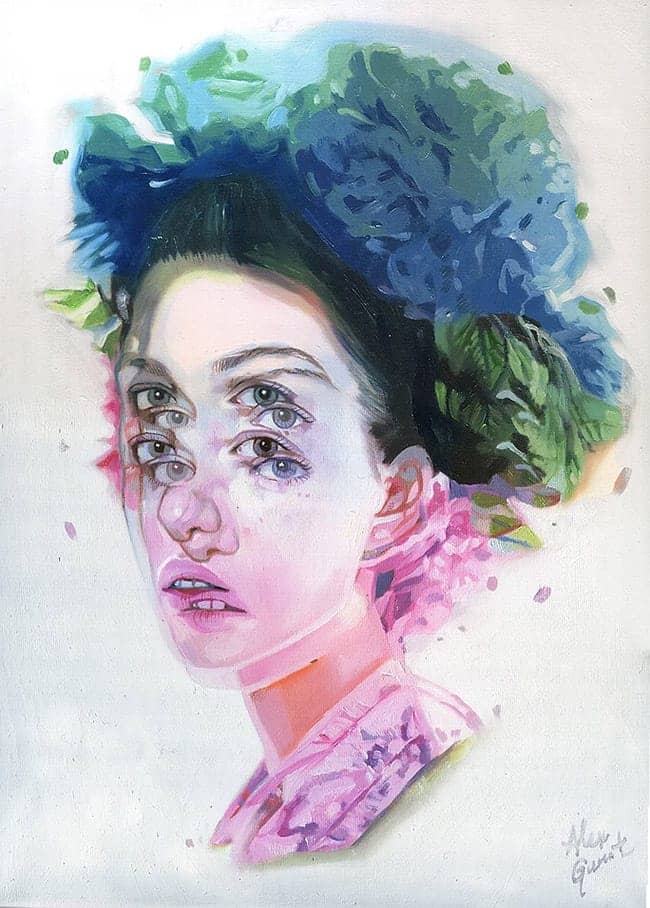
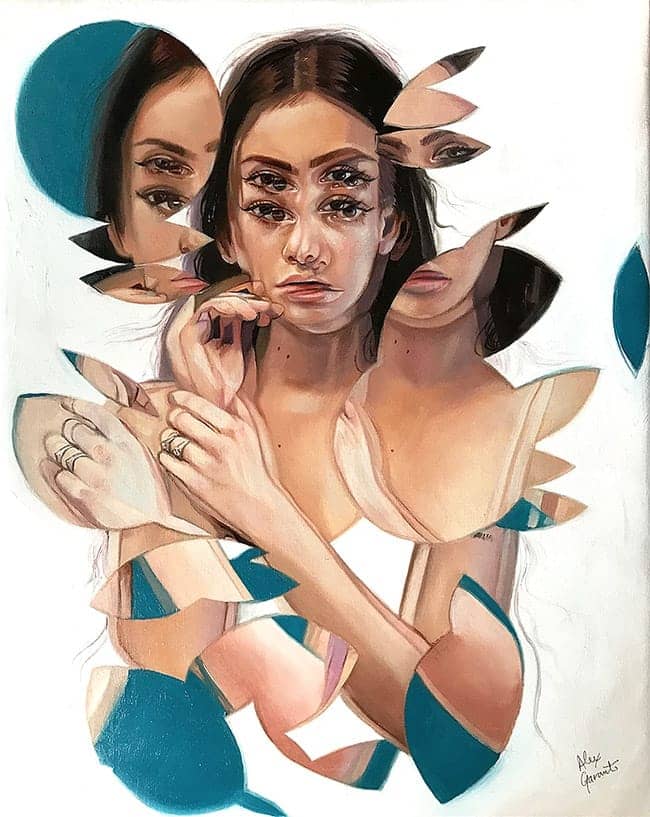
What part of the process of creating a new painting do you enjoy most?
Painting, I love that trance you get in when you are truly focused one piece. When you are fully engaged in the process, time stands still. By the time you come out of your bubble, hours and hours have past. It is almost like deep meditation or a strange creative trance. This is my happy zone.
All your portraits are of women. Does femininity play a big role in your work?
To an extent, I believe that all figurative works are part self-portrait. I might try to express my own femininity. I actually think I am trying to replicate childhood experiences. When I was a child, my mother would draw those beautiful faces on paper, and then we would give me wax pastels, a cup of water and I would spend hours coloring the characters she had drawn. I might subconsciously try to recreate this part of my life. In 2018, I am planning on exploring more outside my comfort zone and paint some male figures as well.
You once described your love for portraits, as “Portraiture is a visual thesis on the human condition.” How personal are your portraits?
I think they slightly vary depending on my mood, when I take a step back and associate some style phases to what was happening in my life. I do thing in general, portraiture is a way to archive information about a generation. Same way as we look at renaissance painting for clues about how people lived years ago. That we admit it or not, we are a product of our time.
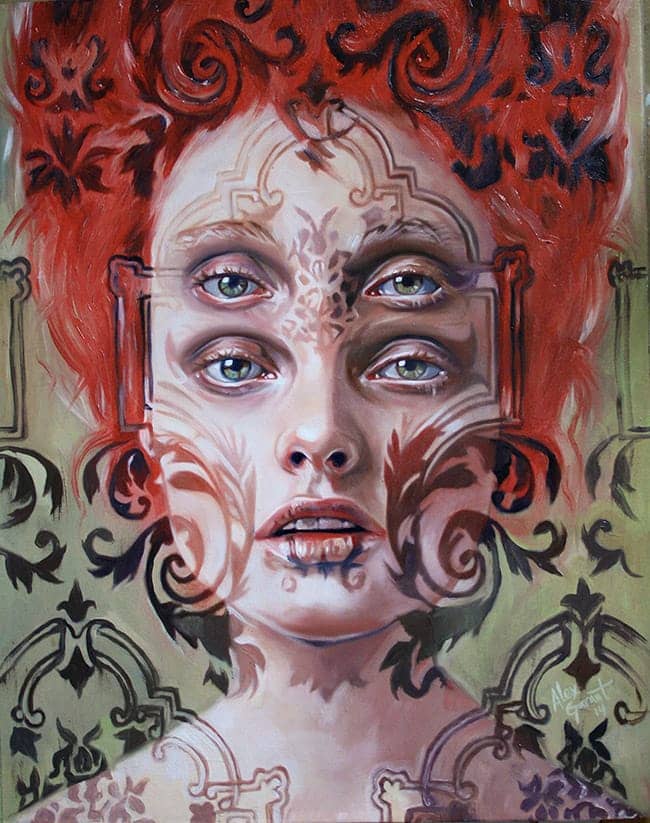
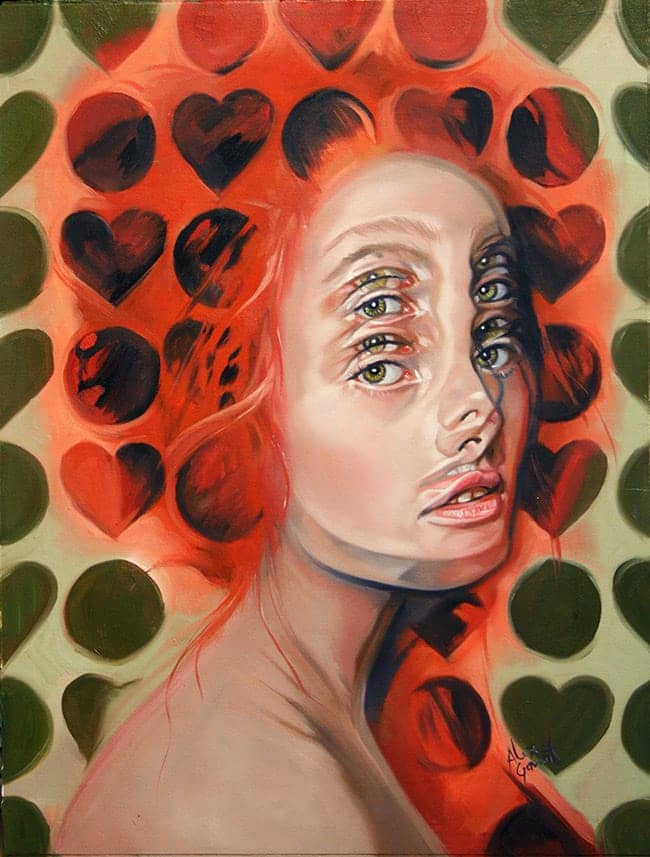
Do real-life events influence your work? If so, could you describe one?
I am not sure if specific events would literally be represented in my paintings, however I can tell you I know which works I painted when I was happy. Happiness helps me create better works.
The women that model for you have become your personal muses. Is it just their beauty that inspired you, or do you reflect their lives and feelings into the paintings as well?
I do primarily choose my muses based on some facial features I found pleasing. There is more to it as well, in most portraits I create; the model’s facial expression must translate into emotion-full, expressionless. What I mean is, I want my character to passively stare, returning the attention back to the person looking at the piece. Neither smiling or sad, just captured in a mundane moment, looking at the world with innocence and curiosity.
You once mentioned that something that surprised you when you pursued a career in art is how well people got your art. Can you share a memorable response you had to your work?
I think I am still surprised most of the time. The artist’s job is fairly solitary. I just do my thing in my studio, I try not to scroll at social media too much, and I don’t have cable TV. I try to get my inspiration from within my own little universe and limit outside influences. So when the product of this process is hung on a gallery wall, it is so humbling to realize people are connecting to it. I am just wowed by people understanding my visual language. It happened a few times at show openings when someone came to me, and started talking to me about my own art and basically gave me a full analysis of one of my painting, from technique to subconscious images and brush stroke breakdown etc. It amazes me how accurate it is sometimes, I just want to blurb out “you understand me” haha.
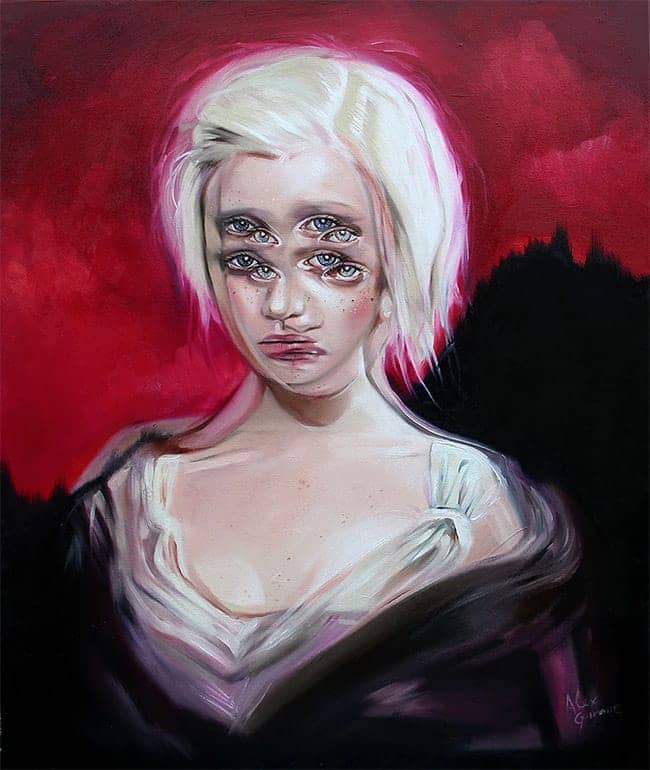
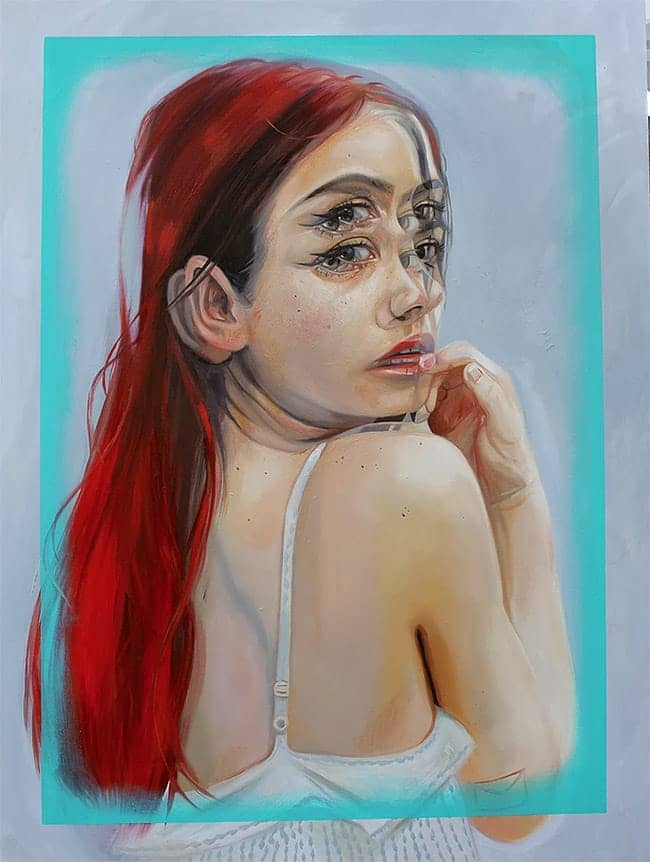
After growing up in Quebec, you’ve been living in Toronto for a while now. What’s your favorite place to spend time in Toronto? And the most inspiring?
I love Toronto. I love everything about it, it’s busy but you can easily find quiet spots. Urban but with nature at the door. I love how multicultural the city is, everyone is so nice. I love the city’s positive energy. I live a fairly quiet lifestyle so my favorite spots are fairly humble as well, I love walking my dog by Humber bay Park, my favorite art store is Deserres on Spadina, it always reminds me of home; I do go to the gym every day so Good Life Fitness is one of my most frequented city spot, I also truly enjoy food and desserts so I cannot live without San Remo Bakery, a local family-owned Italian Bakery on Royal York. Those are part of my daily routine.
As far as inspiration go, the AGO and the ROM are amazing museums in Toronto and I can get lost in there for hours.
You’ve done many group shows with talented artist from all over the world. Which artist do you admire most?
There is SO much talent out there, and I try to collect some art as well. Some of my favorite artists: Richard Ahnert, Jeremy Okai Davis, Travis Louie, David Cook, Michael Reeder, Casey Weldon, Caitlin T. McCormack, Ryan Heshka, Benjamin Constantine, Dan Lam, Shawn Barber, Benjamin Cook, Christian Rex Van Minnen, Cinta Vidal, Lauren Brevner and I can just keep going and going.
Speaking of other artists, if you could pick one artist for a collaboration, dead or alive, who would you pick and why?
Francis Bacon. I just remember seeing his Pope series when I was younger. It was raw and unapologetic. It was scary but theatrical.

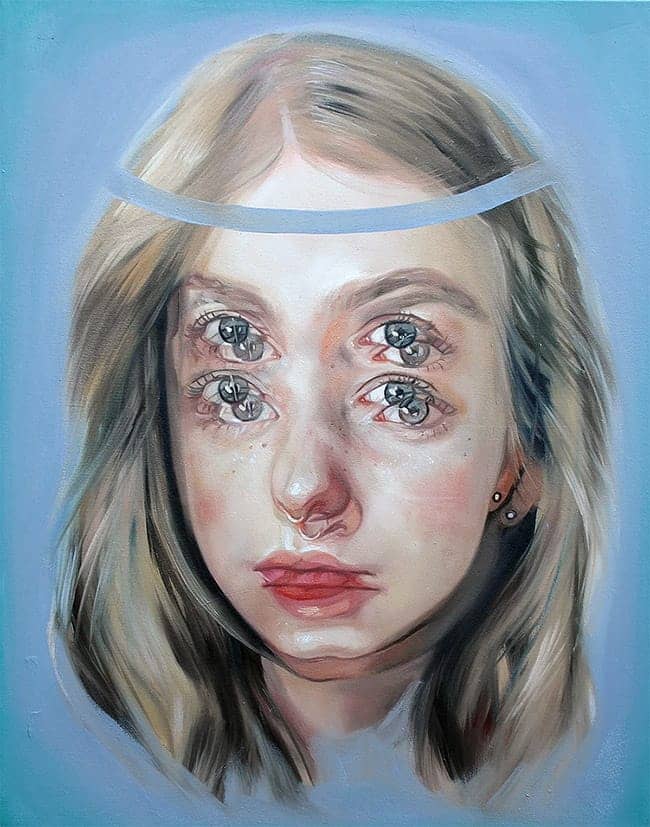
You shared on Facebook that you hosted an art class for students of the Kent State University. What was it like to teach a class? Would it be something you’d like to do more often?
I need to thank Amanda Boyd, teacher extraordinaire, who invited me to meet her students and visit Kent State. It was an amazing experience, I got to share my story and how important art education has been in my life. Not only those young adults were amazing artists, they also want to keep inspiring younger generations by becoming art teachers themselves. To be in front of a crowd committed to be an active voice of the art community is magical, truly made me feel like art will never die, inspiration will always thrive and creativity will always emerge generation after generation.
With social communities like Instagram and Facebook around it’s almost impossible to not have an internet presence. How important is the internet for you as an artist?
I think it is important to use those channels as tools, but there is a cautionary tale about balance. Social media should not define who you are as an artist or as an individual. You can be an artist who occasionally shares on social media, but I wouldn’t want my life to be about being a social media “celebrity” who happens to paint. Like anything in life, I believe it is important to find balance. I do strongly believe social media is an amazing way to share your creative voice with the world. I obviously understand the value of digital vehicles when it comes to marketing, networking and exposure. There is also a sense of community between artists I truly celebrate as well. It’s all about finding that equilibrium between online presence and real-life experiences.
You’ve been a part of many group shows, and have had solo exhibitions in Canada and the US as well. Is there still something you dream of, career-wise?
I think my goal as an artist is to build my legacy. I hope to leave a tiny drop of influence in the big pool of art history. If years from now, I can be remembered as the artist who inspired Figurative Op art, I think my career will be fulfilled.
Last but not least, can you recommend a book, movie or artist you’ve enjoyed lately?
I have been listening to Leon Bridges non-stop for the past few months. I usually listen to mid-century blues while working but for the past year or so Leon Bridge’s voice has been my musical muse.
